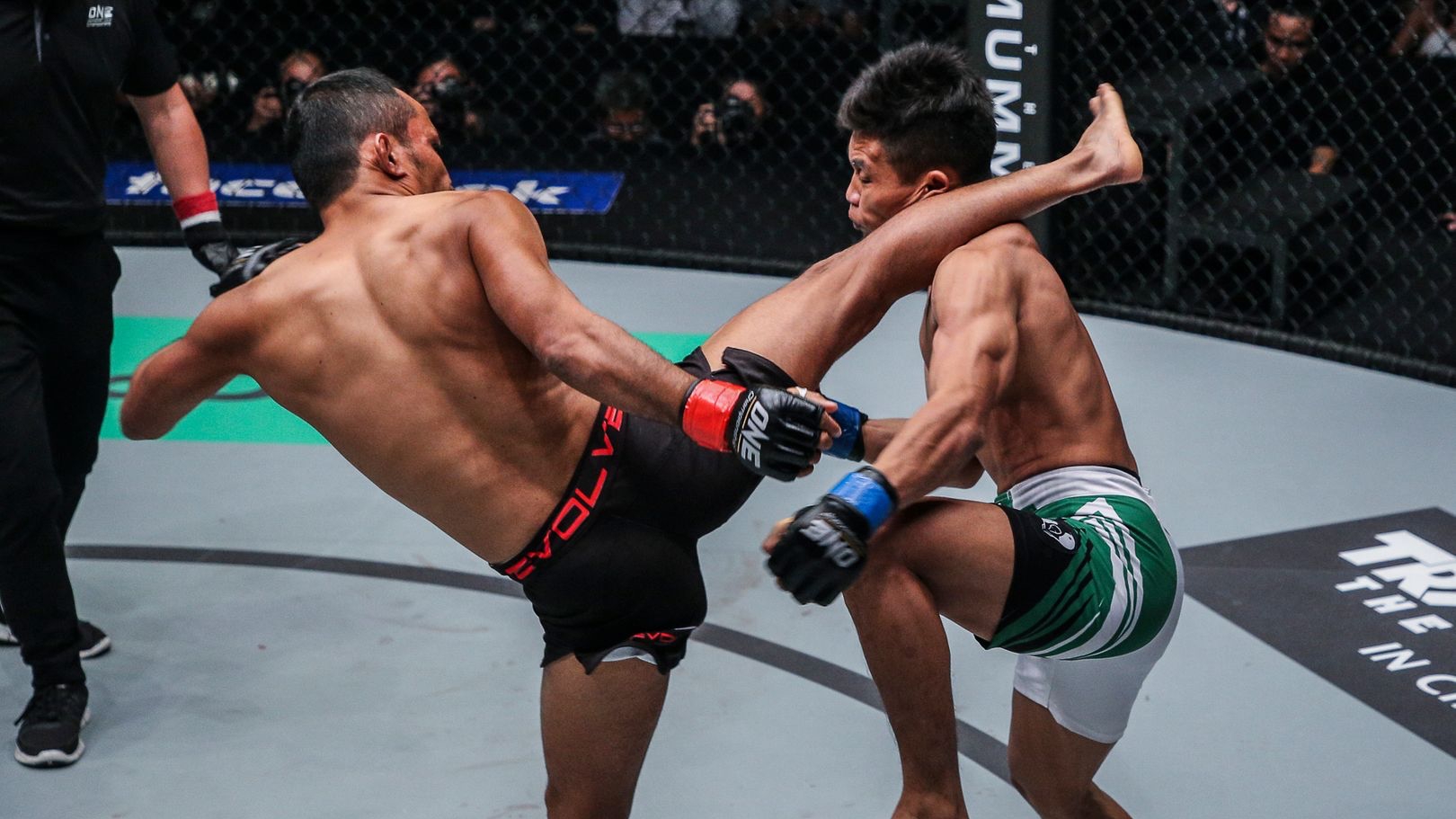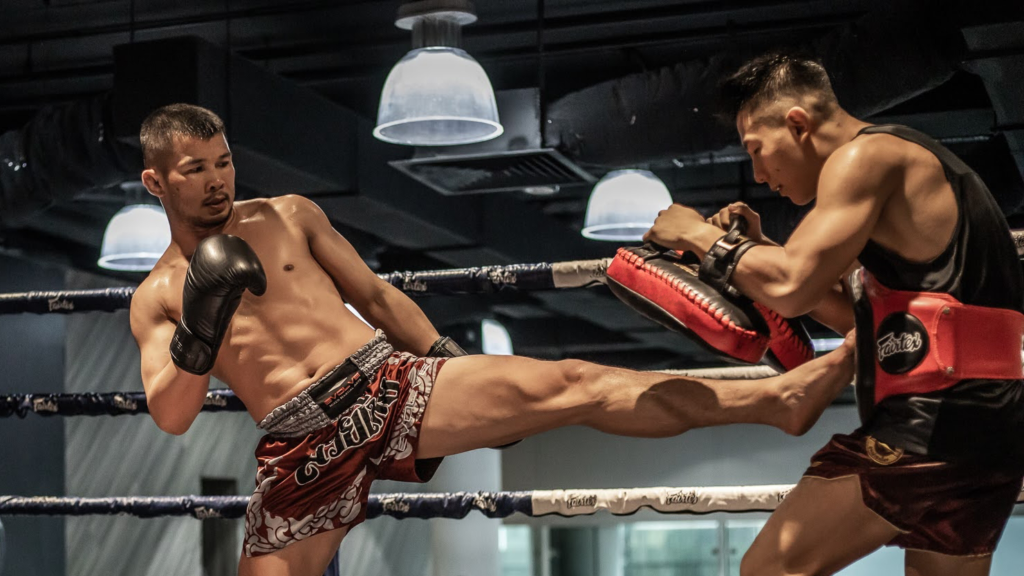The electrifying realm of Mixed Martial Arts (MMA) has always been a melting pot of different combat styles, each contributing its unique flare and techniques. One such influential martial art that has left an indelible mark on the MMA landscape is Muay Thai. This post will delve deep into the heart of this traditional Thai sport, shedding light on its profound impact on the modern MMA striking game.
Muay Thai, also known as the ‘Art of Eight Limbs,’ has been instrumental in shaping the striking tactics of many MMA fighters. Its emphasis on utilizing fists, elbows, knees, and shins in conjunction creates a diverse arsenal for MMA combatants. This exploration will underscore the significance of Muay Thai techniques in giving MMA fighters the edge in stand-up exchanges.
Further on, we’ll elucidate how prominent MMA fighters have leveraged Muay Thai to their advantage, effectively transforming their fighting style and improving their performance in the cage. We will examine case studies of renowned fighters, their training regimen, and their application of Muay Thai techniques in high-stakes bouts.
Finally, the post will also guide enthusiasts who are interested in incorporating Muay Thai into their own MMA training. We will provide insights into how to merge the best of both worlds for an enhanced combat approach. Stay tuned for an exciting journey into the world of MMA and Muay Thai, where tradition meets innovation, creating a dynamic combat style. 🥊🥋🔥
Muay Thai Influence on MMA Striking
The role of Muay Thai in the development of mixed martial arts (MMA) cannot be overstated. The fighting style, also known as “The Art of Eight Limbs,” has become a fundamental component in the striking arsenals of many MMA fighters. The integration of Muay Thai techniques into MMA is evident in the prevalence of its signature techniques in modern bouts.

Muay Thai: A Brief Overview
Originating from Thailand, Muay Thai is a combat sport that utilizes stand-up striking along with various clinching techniques. It differs from traditional boxing and kickboxing because it allows the use of elbows and knees, which increases the number of striking points.
Elbows and Knees in MMA
Elbows and knees are two of the most devastating and efficient weapons in a Muay Thai fighter’s arsenal. These strikes can be delivered from multiple angles and distances, making them extremely versatile. In MMA, the adoption of these techniques has resulted in an increase in knockout victories and is a testament to the power and effectiveness of these strikes.
Adaptation and Integration of Muay Thai in MMA
Adapting Muay Thai for MMA involves more than just incorporating the eight points of contact. It also requires a deep understanding of the techniques, training methods, and strategies that make this martial art so effective.
Distance Management and Timing
One of the most important aspects of Muay Thai that has been adopted in MMA is distance management. This involves maintaining an optimal distance from the opponent to deliver effective strikes while minimizing the risk of counterattacks. Timing is another crucial aspect, as it allows fighters to anticipate their opponent’s movements and respond accordingly.

Aggression and Clinch Work
Muay Thai is known for its aggressive striking style, and this has been a significant influence on MMA fighters. Many adopt a forward-pressing fighting style, relying on a high volume of strikes to overwhelm their opponents. Clinch work is another aspect where Muay Thai shines. In MMA, clinch fighting can be a game-changer, and mastering the techniques of Muay Thai can provide a significant advantage.
Notable Fighters and Fights
Several MMA fighters have successfully incorporated Muay Thai techniques into their style. Notable examples include Anderson Silva, a former UFC Middleweight Champion known for his pinpoint striking accuracy and Jon Jones, who utilizes a range of elbow strikes in his fighting style.
The Impact of Muay Thai Techniques in Key Fights
- In the fight between Anderson Silva and Vitor Belfort at UFC 126, Silva’s front kick to Belfort’s face, a technique borrowed from Muay Thai, led to a stunning knockout victory.
- At UFC 197, Jon Jones demonstrated the effectiveness of the elbow strikes in MMA, as he used a spinning elbow, a traditional Muay Thai technique, to dominate his opponent, Ovince Saint Preux.
Training and Conditioning
Muay Thai training involves intense physical conditioning, which benefits MMA fighters in terms of strength, endurance, and toughness. Many MMA training camps now include Muay Thai drills and sparring sessions, further underlining its influence on the sport.
Conclusão
In conclusion, the profound influence of Muay Thai on the realm of Mixed Martial Arts is evident and undeniable. As the ‘Art of Eight Limbs’ integrates into the striking strategy of modern MMA fighters, it transforms the dynamics of the sport, leading to more exciting and unpredictable bouts. The use of elbows and knees, considered some of the most potent weapons in a fighter’s arsenal, have dramatically increased the rate of knockout victories. Furthermore, the techniques and strategies that Muay Thai brings to the table, such as distance management, timing, and aggressive clinch work, have become critical components in the MMA fighter’s toolkit. Legendary MMA fighters like Anderson Silva and Jon Jones, who have successfully incorporated these techniques, attest to the game-changing nature of Muay Thai. Their victories, achieved through the effective use of Muay Thai techniques, highlight the martial art’s impact and importance. Moreover, the rigorous training and conditioning that Muay Thai requires have raised the bar for physical preparedness in MMA. Ultimately, the profound influence of Muay Thai has undeniably elevated the striking game in MMA to unparalleled heights.
